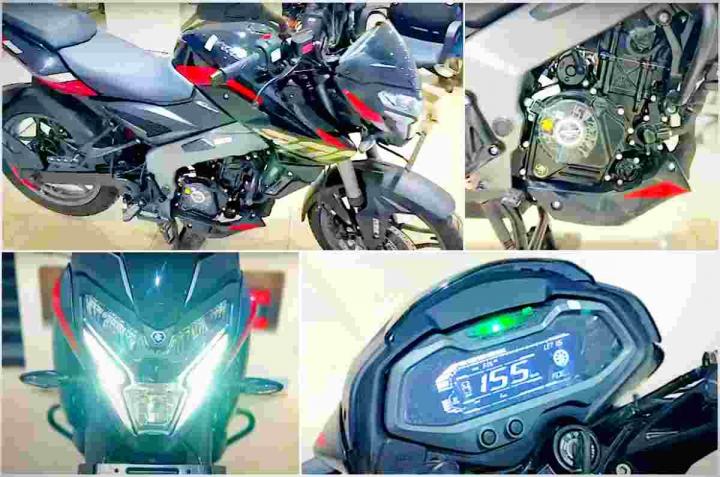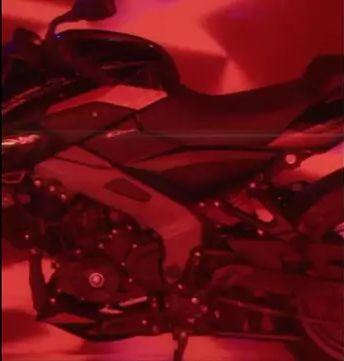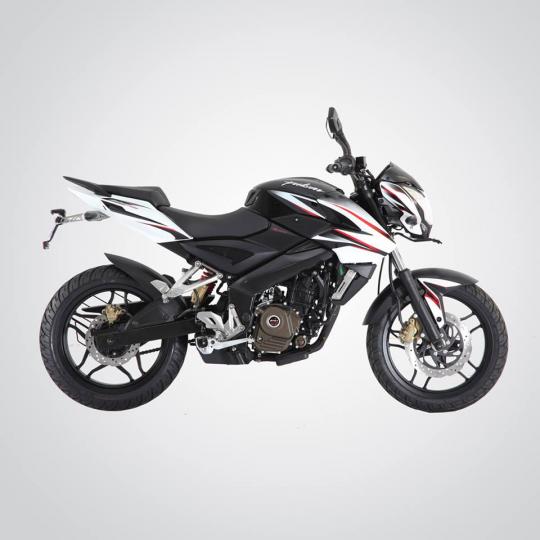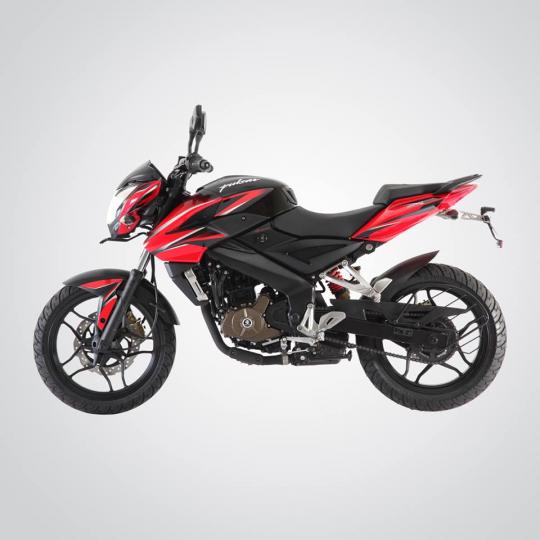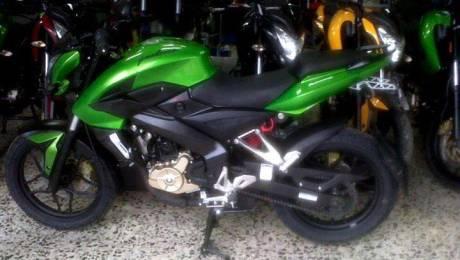News
Bajaj Pulsar NS160 and NS200 launched at Rs 1.46 lakh
The Pulsar NS160 competes with the TVS Apache RTR 160 4V and the Hero Xtreme 160R, while the NS200 rivals the Apache RTR 200 4V and the Honda Hornet 2.0.
Bajaj has launched the 2024 Pulsar NS160 and Pulsar NS200 priced at Rs 1.46 lakh and Rs 1.55 lakh (ex-showroom), respectively.
The 2024 Bajaj Pulsar NS160 and NS200 now feature a redesigned headlamp unit. The new V-shaped LED cluster has integrated LED DRLs. Both bikes get a new digital instrument console, offering Bluetooth connectivity with features like incoming call and SMS notifications and turn-by-turn navigation.
Powering the NS160 is the familiar 160.03cc, single-cylinder engine that produces 17.03 BHP and 14.6 Nm, while the NS200 uses a 199.5cc, liquid-cooled, single-cylinder unit that puts out 24.13 BHP and 18.74 Nm.
The Pulsar NS160 competes with the TVS Apache RTR 160 4V and the Hero Xtreme 160R, while the NS200 rivals the Apache RTR 200 4V and the Honda Hornet 2.0.
Source: Autocar India
- Tags:
- Indian
- Bajaj
- Pulsar NS160
- Pulsar 200 NS
News
2024 Bajaj Pulsar NS160 and NS200 breaks cover
Prices for the updated Pulsar NS160 and Pulsar NS200 are expected to be announced soon.
Bajaj Auto has taken the wraps off the 2024 edition of the Pulsar NS160 and NS200. Both bikes feature several upgrades and are powered by E20-compliant engines.
The 2024 Bajaj Pulsar NS160 and NS200 now come with a redesigned headlamp unit. The new V-shaped LED cluster has integrated LED DRLs.
Bajaj has also equipped the 2024 editions with a new digital instrument console. The LCD unit gets Bluetooth connectivity, offering features like incoming call and SMS notifications and turn-by-turn navigation.
Powering the NS160 is the familiar 160.03cc, single-cylinder engine that produces 17.03 BHP and 14.6 Nm, while the NS200 uses a 199.5cc, liquid-cooled, single-cylinder unit that puts out 24.13 BHP and 18.74 Nm.
News
2024 Bajaj Pulsar NS200 teased ahead of launch
The 2024 NS200 is expected to use the same 199.5cc, single-cylinder engine.
Bajaj recently launched the updated Pulsar N150 and N160. Now, the bike maker is gearing up to introduce the 2024 iteration of the Pulsar NS200.
A teaser released by the company hints at a similar styling. The overall design of the 2024 NS200 is likely to remain unchanged. The teaser shows a muscular fuel tank and a split seat. It could get a digital instrument console with Bluetooth connectivity via the Bajaj Ride Connect app.
The 2024 NS200 is expected to use the same 199.5cc, single-cylinder engine. It produces 24 BHP @ 9,750 rpm and 19 Nm @ 8,000 rpm and is paired with a 6-speed gearbox.
The bike will carry forward the same suspension setup, which consists of an upside-down fork at the front and a monoshock at the rear. Braking will be handled by discs at the front and rear.
- Tags:
- Indian
- Pulsar 200 NS
- Teaser
News
Bajaj takes a dig at the upcoming Hero Karizma XMR 210
Bajaj has shared a picture of the Pulsar NS with the tagline, "The Original Legend Killer".
The Bajaj Pulsar has traditionally been the rival of the Karizma. It has had a free run ever since Hero discontinued the model. However, things are about to change.
Hero MotoCorp is gearing up to launch the Karizma XMR 210 on August 29. In fact, competition is already hotting up not just on the ground but also in the virtual space.
Taking a dig at the upcoming Karizma XMR, Bajaj has shared a picture of the Pulsar NS with the tagline, "The Original Legend Killer". Now, this comes in response to a teaser shared by Hero that shows the digital instrument console of the Karizma with the text, "Ride Your Legend".
The Karizma XMR is said to be based on a new platform powered by a 210cc liquid-cooled, DOHC engine paired with a 6-speed gearbox. While detailed specs have not been released, we can expect it to develop around 25 BHP.
News
Bajaj Pulsar 200 NS to get two new colour schemes
Bajaj Auto has revealed two new dual shade combinations for their flagship motorcycle, the Pulsar 200 NS.
The first is a black and white combination and the second is a red and black one. The bike, draped in these new colour combinations, has been shown on the company’s Facebook page. It is the first time that the Pulsar 200 NS will be available in dual shades. Till now, it was available in four shades: Red, Blue, Black and Yellow. The new colours should make the package more appealing, visually. Bikes with the new paint jobs are expected to hit showrooms by the end of this month.
Apart from the new paint job, there is no change to the Pulsar NS. The bike uses a Liquid cooled, single cylinder 199.5 cc engine that produces a healthy 23 bhp and 18.3 Nm of torque. Bajaj claims, it can touch 60 kph from a standstill in less than 4 seconds and go on to a top speed of 135 kph. An ex-showroom price of under Rs. 1 Lakh makes the Pulsar NS well priced.
Bajaj is also working on fully faired versions of the Pulsar series, dubbed SS (Supersports), with engine capacities of 199.5 cc and 373.2 cc, which have been spotted testing in the vicinity of Pune.
- Tags:
- Indian
- Bajaj
- Pulsar 200 NS
News
India-spec Bajaj Pulsar 200 NS to get improvements soon
Bajaj Auto is all set to launch its flagship motorcycle, the Pulsar 200 NS in Indonesia. Spyshots of the Pulsar 200 NS spotted at Indonesia have arrived onto the interweb through the folks at TMCBlog. One major visual change seen on the Indonesia-spec Pulsar 200 NS is that the motorcycle features a lime green paint job, a color scheme that is a part and parcel of the Kawasaki motorcycle line up globally. The Lime Green paint job on the Indonesia-spec Pulsar 200 NS isn't the only connection of the said motorcycle to Kawasaki, a Japanese automaker with a long standing relationship with Indian automaker Bajaj Auto.
In fact, Kawasaki will handle the distribution, sales and service of the Bajaj Pulsar 200 NS in Indonesia, a thriving two wheeler market where Bajaj Auto is yet to have a substantial presence. Also, the Pulsar 200 NS sold in Indonesia is expected to be CKD assembled by Kawasaki, with the CKD kits exported from Chakan. Apart from handling the Pulsar 200 NS in the Indonesian market, Kawasaki has been entrusted with the responsibility of tweaking the Pulsar 200 NS to suit Indonesian sensibilities. The motorcycle is said to have gotten a range of improvements. While we're yet to get wind of the exact improvements made to the Indonesian version of the Pulsar 200 NS, a welcome development arriving straight from a certain Mr Rajiv Bajaj is that these improvements will filter down to the global models of the Pulsar 200 NS as well.
(Mr Rajiv Bajaj is the Managing Director of Bajaj Auto and the confirmation about India getting an updated Pulsar 200 NS has come through MoneyControl.)
In that light, expect the India-spec Pulsar 200 NS to eventually reflect the changes that will first appear on the Indonesian version of this sporty motorcycle. A while ago, the Indian motoring blogosphere was agog with the rumour of Bajaj Auto coming up with a fuel injected version of the Pulsar 200 NS. Moving on to the realm of speculation, such a possibility is ripe indeed. Given that the Bajaj Pulsar 200 NS will be positioned as a value-for-money offering pitted straight at the Yamaha V-Ixion 150 (The naked Indonesian street bike cousin of the Yamaha R15), fuel injection will further heighten the appeal of the Pulsar 200 NS as the motorcycle is already a much more powerful package when compared to the V-Ixion 150.
- Tags:
- Indian
- Bajaj
- Pulsar 200 NS



